Well the conversation goes like this.... ( sorry - I'm about to start some controversy but here goes) .......
- Danny Richie at GR Research is a firm believer that the better or more resolving that your system is and especially that the more resolving that your speakers are, the more that the weakest link in the chain becomes apparent. One example that may be easier to swallow is that many people think that the crossover components used in a speaker are not that important.... as long as they are pretty good , that's good enough. But many top speaker designers, Danny, Troels Gravesen, Tony Glenn , etc., etc. .... all say that if the speaker is designed really well that you can hear a real improvement as you improve the parts that are used of coarse there is some diminishing returns but going from good polypropylene Caps to top of the line Jansen, Mundorf, and ( if your rich - Duelund) capacitors can make a big difference ........ Same with the Resistors many think ceramic resistors are good enough , but again when you go to Mills, Mundorf, Path audio - ( and Duelund ) , ( etc ) -- Resistors can be clearly heard by many people.. --- This is of coarse qualified by saying everyone hears differently and we all have a budget that we are willing to go with , crossover parts can easily exceed a person's GNP - LOL
--- So back to your question, Danny thinks that the speaker post in most speakers amounts to a large metal bolt that the sound has to travel through to get to the speaker drivers and can be detrimental to the sound, especially since many times it is a big hunk of Brass .... and even if it is a big hunk of copper he says you will hear the difference using his custom designed Tube connectors in place of most if not all other speaker posts. - You can try it yourself and see what you think, thay aren't too expensive - I think they are around $60.00. - It may sound expensive compared to the ten or fifteen dollar Chinese connectors that you can get on Amazon or eBay, but many people feel that the top of line WBT Low Mass connectors do make a real difference too - but they are around $ 200.00 .... And GR Research's Tube connectors may sound better or as good for a lot less.....
------ So that is why I am going to try my cheap version first - then if I hear a difference then maybe try Tube Connectors. ....
PS. Hope I didn't ruffle too many feathers.
--- a link
https://www.google.com/search?q=do+...me&ie=UTF-8#kpvalbx=_5NLmYcrPA6muqtsP6YWeUA16
- Danny Richie at GR Research is a firm believer that the better or more resolving that your system is and especially that the more resolving that your speakers are, the more that the weakest link in the chain becomes apparent. One example that may be easier to swallow is that many people think that the crossover components used in a speaker are not that important.... as long as they are pretty good , that's good enough. But many top speaker designers, Danny, Troels Gravesen, Tony Glenn , etc., etc. .... all say that if the speaker is designed really well that you can hear a real improvement as you improve the parts that are used of coarse there is some diminishing returns but going from good polypropylene Caps to top of the line Jansen, Mundorf, and ( if your rich - Duelund) capacitors can make a big difference ........ Same with the Resistors many think ceramic resistors are good enough , but again when you go to Mills, Mundorf, Path audio - ( and Duelund ) , ( etc ) -- Resistors can be clearly heard by many people.. --- This is of coarse qualified by saying everyone hears differently and we all have a budget that we are willing to go with , crossover parts can easily exceed a person's GNP - LOL
--- So back to your question, Danny thinks that the speaker post in most speakers amounts to a large metal bolt that the sound has to travel through to get to the speaker drivers and can be detrimental to the sound, especially since many times it is a big hunk of Brass .... and even if it is a big hunk of copper he says you will hear the difference using his custom designed Tube connectors in place of most if not all other speaker posts. - You can try it yourself and see what you think, thay aren't too expensive - I think they are around $60.00. - It may sound expensive compared to the ten or fifteen dollar Chinese connectors that you can get on Amazon or eBay, but many people feel that the top of line WBT Low Mass connectors do make a real difference too - but they are around $ 200.00 .... And GR Research's Tube connectors may sound better or as good for a lot less.....
------ So that is why I am going to try my cheap version first - then if I hear a difference then maybe try Tube Connectors. ....
PS. Hope I didn't ruffle too many feathers.
--- a link
https://www.google.com/search?q=do+...me&ie=UTF-8#kpvalbx=_5NLmYcrPA6muqtsP6YWeUA16
Hi xrk , sorry I forgot to answer your question as to why not just bypass the internal crossover completely - I will be trying this idea on all of my speakers , to see how much of a difference it will make on each speaker. And the nice thing is all I have to do is take off the two plastic washers and the plastic tube that will cover the bolt and I can go back and forth as many times as l like to compare to the original speaker post to no speaker post. I want to answer the question for myself, no reason to spend extra for Tube connectors if I don't think the difference warrants it.... But if it does make a difference , every little bit helps!!! - --- Especially if I can't afford the really high end audio equipment.
Try it your cheap way if you want, but if you're truly interested in loudspeaker performance and quality sound just stop watching those video's made to an agenda of earning some easy money from unsuspected viewers like yourself.------ So that is why I am going to try my cheap version first - then if I hear a difference then maybe try Tube Connectors. ....
PS. Hope I didn't ruffle too many feathers.
try reading some good material to get a proper education, like Toole's book. It will not have all the answers but it will give you a more useful education
than buying those Tube connectors. The price will probably be close enough to consider the alternative (the book).
I think there is an easier way to test this and that is to use 12ga high strand count silicone jacket RC race car/drone copter wire as speaker wires and run it through the vent port and solder it directly to the XO board terminal. That will be better than any connector.
I do not completely discount connectors and wires as part of the critical path. I have found that 6ft long 12ga speaker wire provides measurably improved damping factor at the speaker vs 16ga lamp cord.
I think cheap binding posts or, heaven forbid, plastic springs clips on cheap speakers, may impact the sound. Mostly by impedance and impact on damping factor.
for this reason, I spec pure solid copper 8mm dia thread binding posts (Viborg BP603) on my commercial amps and speakers. They are not cheap, but I feel they provide a solid signal throughput and they look and have a nice “feel” when you use (touch) them.

Wesayso’s point about spending the cost of the “tubes” on books/education is a great one.
I do not completely discount connectors and wires as part of the critical path. I have found that 6ft long 12ga speaker wire provides measurably improved damping factor at the speaker vs 16ga lamp cord.
I think cheap binding posts or, heaven forbid, plastic springs clips on cheap speakers, may impact the sound. Mostly by impedance and impact on damping factor.
for this reason, I spec pure solid copper 8mm dia thread binding posts (Viborg BP603) on my commercial amps and speakers. They are not cheap, but I feel they provide a solid signal throughput and they look and have a nice “feel” when you use (touch) them.
Wesayso’s point about spending the cost of the “tubes” on books/education is a great one.
The seeds of doubt....all say that if the speaker is designed really well
A small problem like binding posts deserves a small amount of attention. They should be practical. There is a study here that fruits and vegetables can make good conductors, and they sound good too.
If you learn the kinds of issue that wesayso is talking about, you can remove your doubts.
First PLEASE don't get angry / upset , thank you for all of your help - the discussions , knowledge and opinions are really what Audio Forums are here for - 🙂
-- I really do appreciate all the help, and without help from people with more knowledge or more experience the new diy people like myself would not get very far, so It does mean a lot to hear what everyone thinks.
And I have to say - this is what I thought " might " be the reactions to wanting to try something for myself...
- And yes reading the book would be very helpful.
Again Please don't get upset . . .
But ---- This is how it looks observing from the outside of the threads -- I see similar discussions on Almost every topic or threads on ALL of the Audio Forums, everyone thinks that they are more knowledgeable or have many more years experience - so everyone starts chiming in with their opinion - ( And i will say that in many cases they are more knowledgeable , or do have more experience! ) .... but everyone can't be right ....
- And I Know I won't be changing anyone else's minds.........
But - and this is a very BIG BUT. . . . . . . having gone back and read many many threads over the years -- it is also apparent that So many times many had not heard the amp, or no one had actually heard the preamp, or the speaker... or the new design --- idea yet they thought they knew the "truth" about that subject -- and many, many, many times it is easy to see with " Hindsight " - that many of those opinions were wrong - again I am not saying the opinions HERE are wrong - But my point is if most of the people would either try listen to what ever piece of equipment that is being discussed . . . or would try an idea for themselves, or at least be open to the possibility something is true.... so many of those opinions wouldn't be wrong in hindsight , -- ( just my opinion - LOL )
, but we all enjoy the discussions and we all want to share our opinions. 🙂
-- I really do appreciate all the help, and without help from people with more knowledge or more experience the new diy people like myself would not get very far, so It does mean a lot to hear what everyone thinks.
And I have to say - this is what I thought " might " be the reactions to wanting to try something for myself...
- And yes reading the book would be very helpful.
Again Please don't get upset . . .
But ---- This is how it looks observing from the outside of the threads -- I see similar discussions on Almost every topic or threads on ALL of the Audio Forums, everyone thinks that they are more knowledgeable or have many more years experience - so everyone starts chiming in with their opinion - ( And i will say that in many cases they are more knowledgeable , or do have more experience! ) .... but everyone can't be right ....
- And I Know I won't be changing anyone else's minds.........
But - and this is a very BIG BUT. . . . . . . having gone back and read many many threads over the years -- it is also apparent that So many times many had not heard the amp, or no one had actually heard the preamp, or the speaker... or the new design --- idea yet they thought they knew the "truth" about that subject -- and many, many, many times it is easy to see with " Hindsight " - that many of those opinions were wrong - again I am not saying the opinions HERE are wrong - But my point is if most of the people would either try listen to what ever piece of equipment that is being discussed . . . or would try an idea for themselves, or at least be open to the possibility something is true.... so many of those opinions wouldn't be wrong in hindsight , -- ( just my opinion - LOL )
, but we all enjoy the discussions and we all want to share our opinions. 🙂
Hi Hallcon,
That’s a great open mind you have and willing to try things and give people and things, the benefit of the doubt. It’s a good attitude. But the physics of an electrical connector are well understood and measurable. There are different frequency regimes where certain connectors won’t work (RF, microwave etc). But at audio frequencies it comes down to a good low impedance connection. So really nothing will beat a fat high strand count copper wire that’s soldered or crimped onto a high current connector. So the straight wire to your XO board should be the baseline.
There are RC car/quad/drone connectors for batteries and motors called Deans connectors and they might make very good speaker connectors. Rated for very 60A continuous load and 75A bursts. I think some people on DIYA use them for amplifier internal connections between PSU and amp. I think they would beat banana plugs for max current (30A).
That’s a great open mind you have and willing to try things and give people and things, the benefit of the doubt. It’s a good attitude. But the physics of an electrical connector are well understood and measurable. There are different frequency regimes where certain connectors won’t work (RF, microwave etc). But at audio frequencies it comes down to a good low impedance connection. So really nothing will beat a fat high strand count copper wire that’s soldered or crimped onto a high current connector. So the straight wire to your XO board should be the baseline.
There are RC car/quad/drone connectors for batteries and motors called Deans connectors and they might make very good speaker connectors. Rated for very 60A continuous load and 75A bursts. I think some people on DIYA use them for amplifier internal connections between PSU and amp. I think they would beat banana plugs for max current (30A).
Last edited:
Danny has his opinions on things. He oversells things sometimes. I bought some tube connectors and liked them more than the binding posts I have used in the past. I added them to my DIY full range 2 channel speakers along with speakon connectors. I haven't gone so far as replacing the store bought speaker binding posts. I was thinking that if I did change out the binding posts on the Studio 530 I would use a speakon connector instead. Most of my amps have speakons. I am putting tube connectors in my Class A monoblock amps. Did I notice any difference between the speakons and the tube connectors? Not really.
Here’s one of my latest videos on a new speaker XO using a ribbon and aluminum cone Dan Wiggins designed XBL woofer in a TL.
Your idea of removing bass duties from the 530 is intriguing. 100Hz is a good place to cross to a sub.
Iron core inductors are fine if used properly. They are sometimes better for woofers as they have lower DCR than air core so you get more bass sensitivity. As much as 1.5dB or so.
I always pictured you as being 50 or 60 lol
And I mean that in the best way possible, your projects are great, but I'd assumed you'd been doing this for 30 or 40 years
Hey thanks, Patrick! LOL, I am fifty something! But I have been doing this only since I signed up to DIYA in 2012.
I think directivity is not as important as it being a point source for uniform polars left right and up and down. Sort of like a coaxial. We can also give it time alignment so that it can be close to “transient perfect” with the right crossover.
A couple of thoughts:
I believe the JBL 2408H-2 will fit that waveguide. You'll want to double check:
https://www.simplyspeakers.com/jbl-replacement-speaker-driver-2408h-2-5020337x.html
This is a criminally underused compression driver. It's basically a more refined take on the BMS 4540ND. The BMS sells for about $150, the JBL is $65.
https://en.toutlehautparleur.com/compression-driver-bms-4540nd-16-ohm-1-inch-exit.html
The Danley SH-50 uses the BMS 4550.
I agree with your comments about directivity.
In my home, I've had the Yamaha DXR12 in my living room. This is a two way with a 12" woofer and a 1" compression driver.
I've also had the Waslo Cosynes, which are a Unity horn using Gento 2" midranges and AuraSound woofers. Oddly enough, it uses the exact same compression driver as the Yamaha.
The DXR12 sounds much more "dynamic." Basically a 12" midrange really jumps out and grabs you.
But the Unity horn crushes it in the imaging department. I moved the Unities out of the living room, because my wife hates how they look. When I replaced the Unities with a pair of Behringers, I eventually wound up buying a Dolby PLII processor and adding a center channel. The unities really sound like there's a phantom center channel.
Another cool thing about the unities is that it's easier to understand speech. I think the excellent phase response improves articulation.
For instance, I'm typing this about fifty feet away from the speakers, in my office on the other side of the house. The TV is playing. I can't easily understand the dialog on the TV.
With the unities, it's not like that. You can walk the room and the sound doesn't change.
Of course, all constant directivity horns make the same claim. But with a Unity horn, the midranges are so close to the tweeter, if you're 50' away and 45 degrees off axis, the shape of the amplitude response is pretty good, but the phase is also pretty good.
With a speaker like the Yamaha, the pathlength difference between the midrange and the tweeter makes that impossible.
Whether you'll want to go to the hassle, a lot will depend on how you use them. At my house I often put on a podcast or music while I'm doing stuff at the house, so being able to have good sound when I'm REALLY far off axis is nice.
The crossover in that speaker is ridiculous.
I can't believe Timbers got JBL to use bypass capacitors in a $120 speaker. Just insane. The crossover alone appears to have about $20 worth of parts.
In an earlier post, I talked about how nice the JBL 2408H-2 is, especially for $55.
I had that wrong. I have the JBL 2408H-1 here in my garage. And it's very nice. But it's also 3X as much.
I still think the JBL 2408H-2 may be a compelling upgrade for the 530, especially if you "unitize" it:
In the measurements that Danny Ritchie did, you can see a gnarly resonance in the tweeter of the Studio 530. I would speculate that the resonance is there because the tweeter in the 530, the JBL 2414H-1, has a puny motor. Combined with a really small back chamber, you end up with a peak at the low end of the tweeter. The JBL 2414H-1 is used in some JBL speakers that are 10dB louder than the Studio 530. So I think what Timbers was doing here, with the crossover, was intentionally creating a resonance on the low end, allowing the tweeter to be crossed over lower than you normally would. The Studio 530 is crossed over at 1400Hz, which is quite low for a tweeter. The JBL 2408H-2 has a bigger motor AND a lighter diaphragm (because it's a ring) so I have a feeling that it will not have the resonance seen in the 2414H-1. At the same time, the lower Q of the 2414H-1 will likely create a dip in the midrange which could be elegantly "filled in" by a couple of small midranges.
I can't believe Timbers got JBL to use bypass capacitors in a $120 speaker. Just insane. The crossover alone appears to have about $20 worth of parts.
In an earlier post, I talked about how nice the JBL 2408H-2 is, especially for $55.
I had that wrong. I have the JBL 2408H-1 here in my garage. And it's very nice. But it's also 3X as much.
I still think the JBL 2408H-2 may be a compelling upgrade for the 530, especially if you "unitize" it:
In the measurements that Danny Ritchie did, you can see a gnarly resonance in the tweeter of the Studio 530. I would speculate that the resonance is there because the tweeter in the 530, the JBL 2414H-1, has a puny motor. Combined with a really small back chamber, you end up with a peak at the low end of the tweeter. The JBL 2414H-1 is used in some JBL speakers that are 10dB louder than the Studio 530. So I think what Timbers was doing here, with the crossover, was intentionally creating a resonance on the low end, allowing the tweeter to be crossed over lower than you normally would. The Studio 530 is crossed over at 1400Hz, which is quite low for a tweeter. The JBL 2408H-2 has a bigger motor AND a lighter diaphragm (because it's a ring) so I have a feeling that it will not have the resonance seen in the 2414H-1. At the same time, the lower Q of the 2414H-1 will likely create a dip in the midrange which could be elegantly "filled in" by a couple of small midranges.
Attachments
-
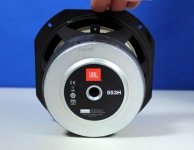 user_109685_large_cc4f7218ffc57b257d8ee565a22286ee.jpg45.4 KB · Views: 219
user_109685_large_cc4f7218ffc57b257d8ee565a22286ee.jpg45.4 KB · Views: 219 -
 user_109685_large_71caa5c5fca593c98247515f7f19c709.jpg87.9 KB · Views: 158
user_109685_large_71caa5c5fca593c98247515f7f19c709.jpg87.9 KB · Views: 158 -
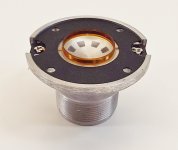 product_d_s_dscf4629.jpg96.9 KB · Views: 116
product_d_s_dscf4629.jpg96.9 KB · Views: 116 -
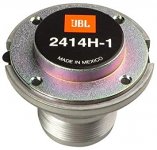 41EHtuBbtLL._AC_SX355_.jpg23 KB · Views: 130
41EHtuBbtLL._AC_SX355_.jpg23 KB · Views: 130 -
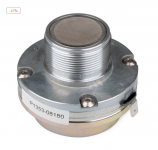 2022-01-18 22_45_36-JBL 2408H-2 Factory Replacement Driver for 5020337X _ DJ eShop.png230.3 KB · Views: 155
2022-01-18 22_45_36-JBL 2408H-2 Factory Replacement Driver for 5020337X _ DJ eShop.png230.3 KB · Views: 155 -
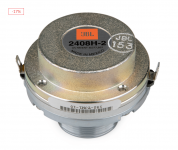 2022-01-18 22_45_24-JBL 2408H-2 Factory Replacement Driver for 5020337X _ DJ eShop.png226.2 KB · Views: 156
2022-01-18 22_45_24-JBL 2408H-2 Factory Replacement Driver for 5020337X _ DJ eShop.png226.2 KB · Views: 156 -
 2022-01-18 22_08_00-Modifying the JBL Studio 530 with Danny Richie! - YouTube.png389.4 KB · Views: 177
2022-01-18 22_08_00-Modifying the JBL Studio 530 with Danny Richie! - YouTube.png389.4 KB · Views: 177
Hi Patrick B,
I’m getting confused. Are the photos above of the tweeter, woofer and XO from inside the Studio 530? Did you take these with your set of 530’s? Which tweeter is inside the 530, 2414 or 2408?
I’m getting confused. Are the photos above of the tweeter, woofer and XO from inside the Studio 530? Did you take these with your set of 530’s? Which tweeter is inside the 530, 2414 or 2408?
The photo is from the inside of a JBL Studio 530, which I found online.
The Studio 530 uses JBL compression driver 2414H-1 (be careful when looking this up, there are multiple variants such as 2414H)
The 2414H (and it's variants) is basically just a dome tweeter with a compression chamber. I'm not saying it's a terrible tweeter by any means, but it clearly has a big resonant peak right in the midrange, which we don't want. The JBL 2408H-1 is a particularly nice ring radiator from JBL, I think it's superior in some ways to what BMS sells, and in a lot of respects it's a miniature version of the D2430K that's in the JBL M2. Both were designed by Alexander Voishvilo at JBL.
The JBL 2408H-2 is a cheaper version of the 2408H-1, with less motor. But still a LOT more motor than the 2414H-1 and also a lighter diaphragm (because it's a ring not a dome.) YMMV but I think ring radiators sound smoother than conventional compression drivers. And the 2414H and it's variants appear to screw right into the same waveguide.
The Studio 530 uses JBL compression driver 2414H-1 (be careful when looking this up, there are multiple variants such as 2414H)
The 2414H (and it's variants) is basically just a dome tweeter with a compression chamber. I'm not saying it's a terrible tweeter by any means, but it clearly has a big resonant peak right in the midrange, which we don't want. The JBL 2408H-1 is a particularly nice ring radiator from JBL, I think it's superior in some ways to what BMS sells, and in a lot of respects it's a miniature version of the D2430K that's in the JBL M2. Both were designed by Alexander Voishvilo at JBL.
The JBL 2408H-2 is a cheaper version of the 2408H-1, with less motor. But still a LOT more motor than the 2414H-1 and also a lighter diaphragm (because it's a ring not a dome.) YMMV but I think ring radiators sound smoother than conventional compression drivers. And the 2414H and it's variants appear to screw right into the same waveguide.
I reviewed the various JBL Studio options and decided to order a pair of JBL Studio 520Cs
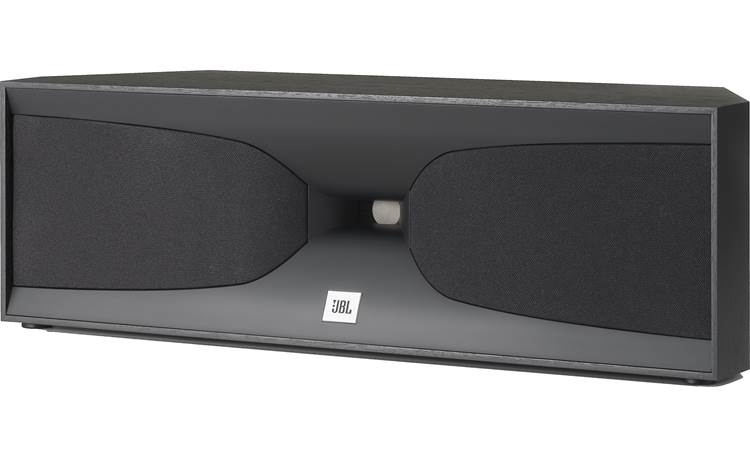
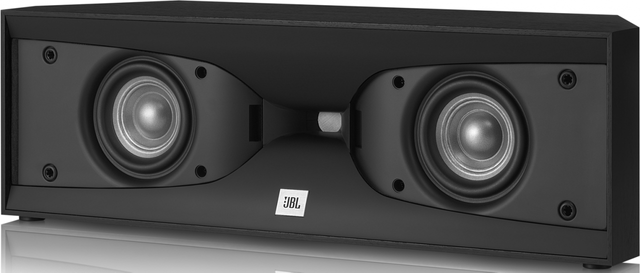
I evaluated the 520C, the 530 and the 570. At first I was going to get the 570, which is on sale for $199 right now. The 570 is one or two dB more efficient than the 530, due to it's use of two woofers instead of one.
But the 520C is also more efficient, with higher power handling than the 530. I dig the fact that it's symmetrical.
As always, I can't think of a good reason why you'd want a center channel that's an MTM flipped on it's side. As years of measurements have demonstrated, this configuration leads to horrendous polar response right in the midrange, where you'd want good response.
But Unitizing the waveguide fixes that!
So my 'hunch' is that if we add a couple of midranges to the JBL 520C, we should be able to create a Unity horn that covers about 80Hz to 20khz, with polar control on ONE axis down to about 500Hz, maybe even 300Hz. (Because the cabinet is quite wide - twenty two inches.)

The 520C reminds me of a quarter-scale version of Art's "Syntripp"


I evaluated the 520C, the 530 and the 570. At first I was going to get the 570, which is on sale for $199 right now. The 570 is one or two dB more efficient than the 530, due to it's use of two woofers instead of one.
But the 520C is also more efficient, with higher power handling than the 530. I dig the fact that it's symmetrical.
As always, I can't think of a good reason why you'd want a center channel that's an MTM flipped on it's side. As years of measurements have demonstrated, this configuration leads to horrendous polar response right in the midrange, where you'd want good response.
But Unitizing the waveguide fixes that!
So my 'hunch' is that if we add a couple of midranges to the JBL 520C, we should be able to create a Unity horn that covers about 80Hz to 20khz, with polar control on ONE axis down to about 500Hz, maybe even 300Hz. (Because the cabinet is quite wide - twenty two inches.)

The 520C reminds me of a quarter-scale version of Art's "Syntripp"
Probably a good think JBL aren't selling the studio range in the UK at the moment or I'd be seriously tempted.
Tangent question; I have two spare 2414H-1 that I have ordered china diaphragms for (JBL part is to just replace the whole driver hence the spare magnets). Are there any worthwhile screw on horns for a unity horn project?
LOL, I almost thought this was a mid injection port! Is that just the diver for the grill mount clip?

If the 530 has a 1in screw thread can we install any CD we want to it?
I think I measured the 530 some time ago. I don’t recall as an obtrusive as a midrange anomaly at play. I’ll have to dig that up.
If the 530 has a 1in screw thread can we install any CD we want to it?
I think I measured the 530 some time ago. I don’t recall as an obtrusive as a midrange anomaly at play. I’ll have to dig that up.
Tangent question; I have two spare 2414H-1 that I have ordered china diaphragms for (JBL part is to just replace the whole driver hence the spare magnets). Are there any worthwhile screw on horns for a unity horn project?
I've done Unity horns with the JBL PT horn that Zilch made so popular
One of the top five best measuring waveguides ever
- Home
- Loudspeakers
- Multi-Way
- JBL Studio 530’s as Synergy Donor